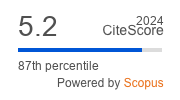Article | Open Access
The Informational Consequences of Populism: Social Media News Use and “News Finds Me” Perception
| Views: | 4809 | | | Downloads: | 5246 |
Abstract: Prior studies have theorized a positive association between people’s populist attitudes and an increased use of social media to consume news, which will be mainly driven by individuals’ engagement with news that reflects their people-centered, anti-elitist, and Manichean understanding of politics. However, such general connection remains elusive. This research seeks to further clarify this strand of the literature by incorporating people’s belief that important political information will find them without actively seeking news—"News Finds Me” perception (NFM). For that, we use online survey data from two European countries that differ regarding the ideological political supply side of populism (Italy and Portugal). The main results suggest that citizens who hold stronger populist attitudes will also develop stronger NFM. Furthermore, findings reveal a mediating effect of social media news use on the effects of populist attitudes over NFM. That is, those who hold stronger populist attitudes tend to use social media to get exposed to public affairs news more often, which in turn explains the development of the NFM. These results emphasize the importance of systematically exploring citizens populists’ attitudes within today’s social media, social networks, and complex information systems.
Keywords: Europe; News Finds Me perception; news use; populism; social media
Supplementary Files:
Published:
Issue:
Vol 10, No 1 (2022): Analyzing Citizen Engagement with European Politics Through Social Media
© Pablo González-González, Hugo Marcos-Marné, Iván Llamazares, Homero Gil de Zúñiga. This is an open access article distributed under the terms of the Creative Commons Attribution 4.0 license (http://creativecommons.org/licenses/by/4.0), which permits any use, distribution, and reproduction of the work without further permission provided the original author(s) and source are credited.


